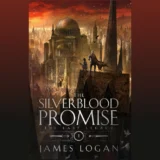What a difference a decade makes. 2010 saw the release of Benjamin Percy’s novel The Wilding, a novel with a subplot about a man who finds release wearing a suit made from animal pelts. Percy had, initially, written fiction with a sense of horror lurking just below the surface, but from there, he embraced genre elements more fully. His later novel Red Moon focused on werewolves; and now, one of the stories in his new collection Suicide Woods focuses on a bear who, after a harrowing encounter with hunters, begins to have a go at emulating the life of a human.
That story, “Heart of a Bear,” is arguably the strangest tale in a collection abounding with bizarre moments. After the attack, the bear heals beneath a house occupied by a human couple and their baby. The bear’s interactions with the couple leave the neck of one broken and the other devoured; as he attempts to take care of their orphaned child, the bear endeavors to become more human, taking up shaving, learning to speak, and accompanying the growing child to the playground.
It’s one of several stories within the collection that operate under a kind of dream logic laced with gritty horror. The idea of a bear adopting human mannerisms and taking a young child under its wing is the stuff from which children’s books can be built. Not in Percy’s hands, though: here, the tone is more like that of a fairy tale retold with added viscera, a scenario in which no one leaves unharmed.
“The Cold Boy” and “The Dummy” also tap into a similar blend of folktales and realism. In the former, a child falls through a hole in the ice, then returns in a fundamentally altered form, silent and craving only the coldest of foods. In the latter, Johnette, a young woman on her high school’s wrestling team, develops an unlikely bond with the dummy she’s taken home for practice. Slowly, she gets the sense that there’s something…off about it.
“She remembered a show about the occult she had seen on the History Channel. The narrator had said that anything in a human shape took on a human essence. That was the principle behind a golem, a voodoo doll, a wicker man. Johnette did not think much of this then, but wondered now.”
Not all of the stories click with the unsettling menace of this trio. “Dial Tone,” a story of telemarketing and mysterious murders, taps into the unfettered rage that comes from the dehumanizing interactions people engage in every day — which could make for a fascinating, horror-tinged exploration of work and class. The narrative voice doesn’t entirely click for this one, unfortunately, though Percy does tap into similar themes more effectively elsewhere in the book. And “Suspect Zero,” a tale of a mysterious murder, is told out of chronological sequence, a choice which hints perhaps too broadly that a game-changing twist is in the cards.

Though Percy has a penchant for pulpy thrills and kinetic plots, one of the collection’s highlights is a significant departure from both. “Writs of Possession” tells a story of economic collapse and human desperation through scenes of homes being repossessed, and deals with the emotional fallout it takes on both their residents and the law enforcement personnel tasked with making evictions. It’s as bleak as anything else in this collection, which includes the aforementioned “a person eaten by a bear” story as well as one about a pandemic that ends civilization as we know it. Ordinary people are being pushed to their breaking point here; there’s a sense of utter despondency throughout these interactions, laced with the surreal. It’s hard to quantify exactly how this works, but it lands with an abundant force.
Suicide Woods closes with its longest story, “The Uncharted,” about the search for a missing camera crew in an isolated stretch of coastal Alaska. Percy does a solid job of making the characters in this one distinct; while it’s clear that something terrible awaits them, it’s ambiguous throughout much of the story whether or not that something is supernatural in nature. And while I’d worried that this might be what John Langan calls a “trap story”—where the plot concludes with these characters being, well, trapped—this takes a different route. It’s fundamentally about survival and human connections, and Percy remains true to that, often to thrilling effect. (It would also, I’d argue, make a terrific film: think Hold the Dark meets The Ritual, maybe.)
As with every story collection, Suicide Woods has its own ebbs and flows, and its own high and low points. But when this book hums along, it does so to powerful effect. And it’s a fine reminder of what happens when a writer taps into their penchant for the outright fantastical, and the unsettling stories that can arise as a result.
Suicide Woods is available from Graywolf Press.
 Tobias Carroll is the managing editor of Vol.1 Brooklyn. He is the author of the short story collection Transitory (Civil Coping Mechanisms) and the novel Reel (Rare Bird Books).
Tobias Carroll is the managing editor of Vol.1 Brooklyn. He is the author of the short story collection Transitory (Civil Coping Mechanisms) and the novel Reel (Rare Bird Books).










